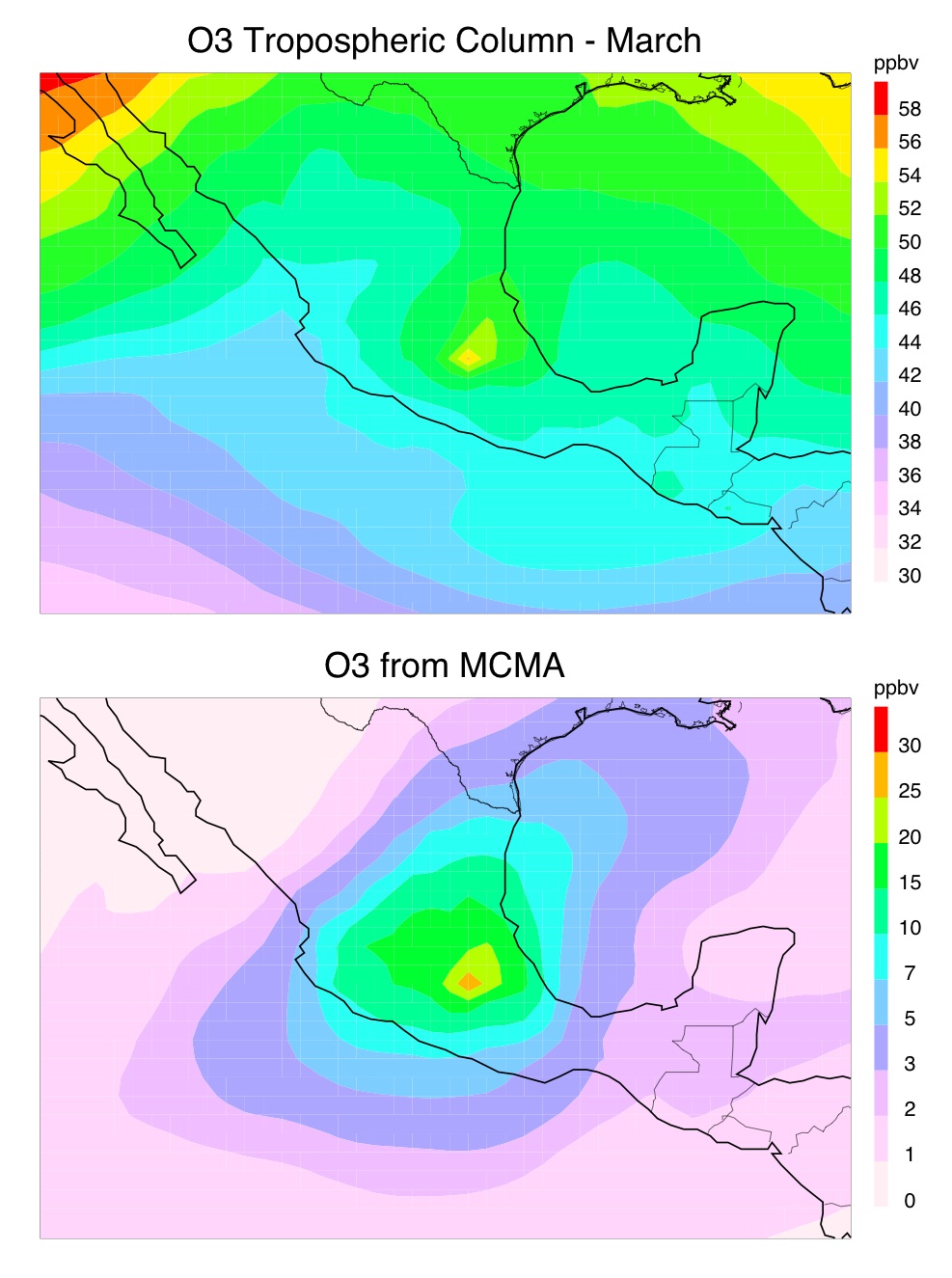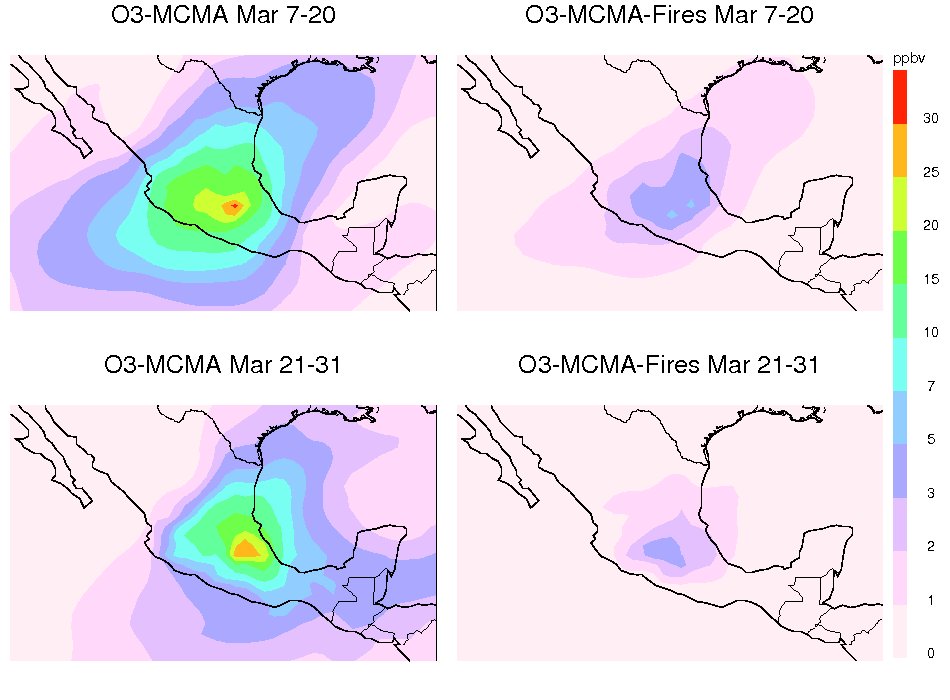Ozone produced by Mexico City Emissions
NCAR's Model for Ozone and Related Chemical Tracers, version 4 (MOZART-4) has been used to quantify the ozone produced by emissions from the Mexico City metropolitan area (MCMA), in conjunction with analysis of the MIRAGE experiment. MOZART-4 simulations at a relatively high horizontal resolution (T170, 0.7 deg) show good agreement with the regional scale aircraft observations although unable to resolve the urban-scale variations. By "tagging" the NO emissions from the Mexico City metropolitan area (MCMA) in the model simulation, the ozone produced by MCMA can be quantified. Figure 1 shows the ozone tropospheric column averaged for March 2006, as well as the ozone only produced by MCMA emissions. While locally-produced ozone is at least 50% of the total ozone directly over MCMA, the contribution drops quickly with distance. Wildfires and other forms of open burning are prevalent on the hillsides surrounding Mexico City. The fire emissions (based on MODIS satellite fire counts) have been tagged separately and the ozone produced from fires in the MCMA is compared to the total city emissions in Figure 2. Prior to a rainy period that began on March 20 (suppressing the wildfires), the ozone from fires was a moderate but fairly widespread contribution to the MCMA-produced ozone. After March 20 the fire contribution dropped significantly.

Figure 1:
Tropospheric column (pressure >400 hPa) of total ozone (top) and ozone produced from Mexico City emissions (bottom), averaged over March 2006.

Figure 2:
Ozone from all Mexico City emissions (left), and from open fires in the MCMA (right), before (top) and after (bottom) rainy period.
Reference: Emmons, L. et al., Impact of Mexico City emissions on regional air quality from MOZART-4 simulations, to be submitted to ACPD.
MOZART-4 will be made available to the community through the NCAR Community Data Portal.
